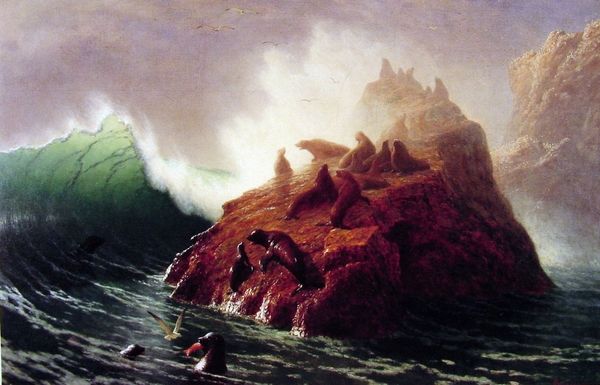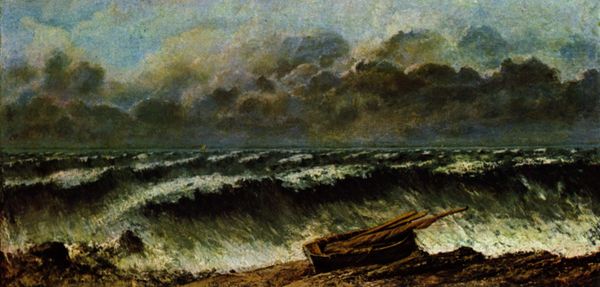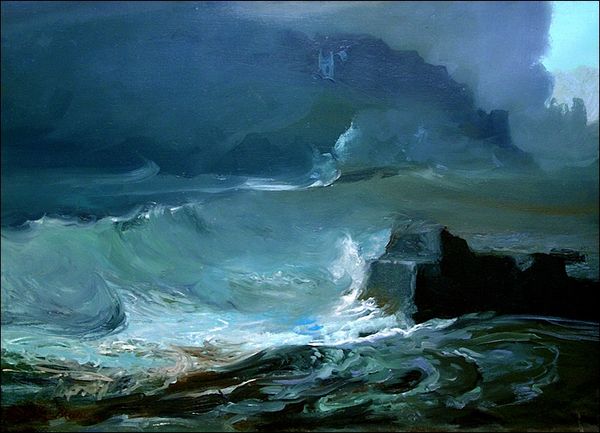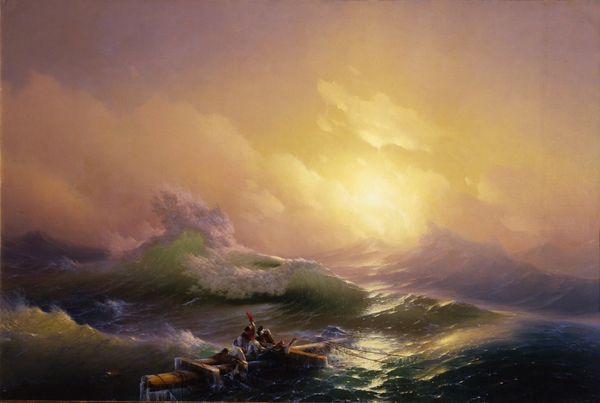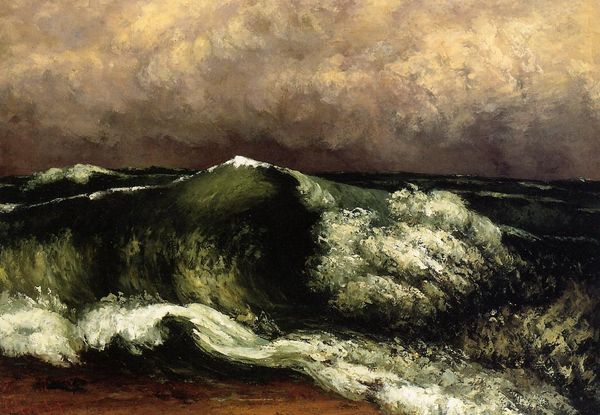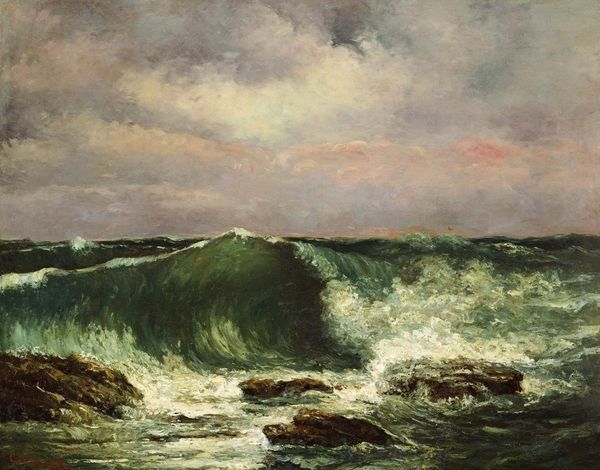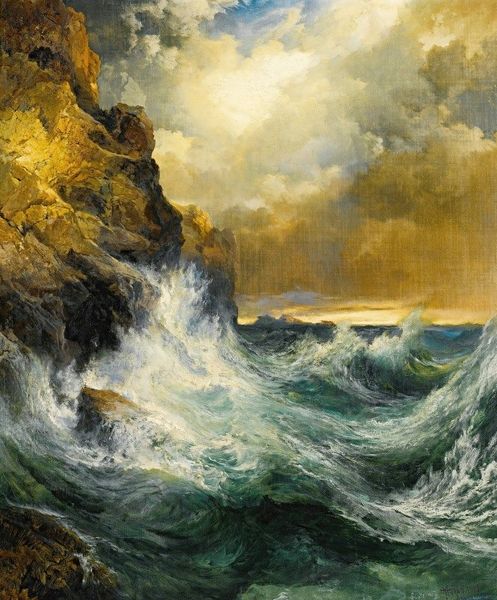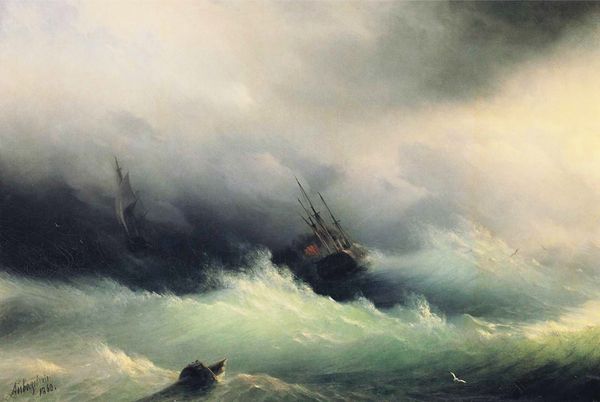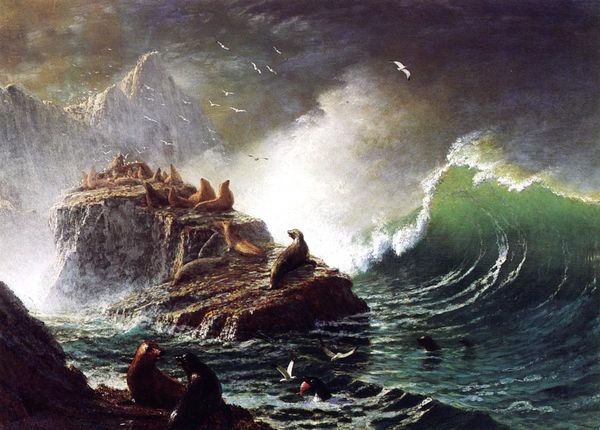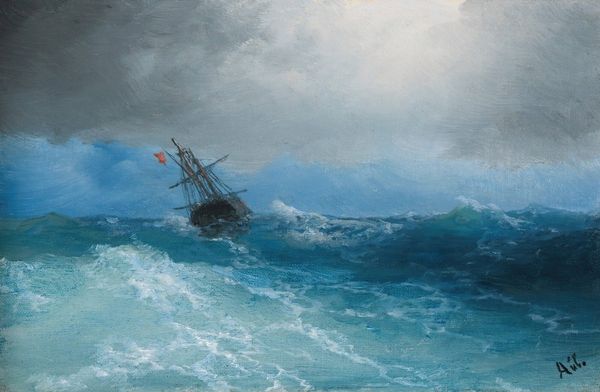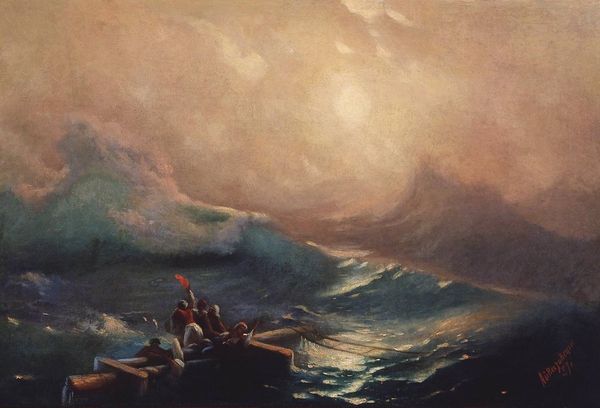
Dimensions: 108 x 163.8 cm
Copyright: Public domain
Editor: Albert Bierstadt's "The Shore of the Turquoise Sea," painted in 1878, really captures a dramatic scene. I am immediately struck by the raw power of that massive wave and how small it makes the ships look. What are your thoughts? Curator: It’s fascinating how Bierstadt uses this sublime, almost theatrical scene to tap into the American Romantic ideal. Remember, this was a time of westward expansion, fueled by a belief in manifest destiny. How does the visual spectacle, that awe-inspiring wave, connect to the public’s understanding of nature’s role? Editor: Well, it feels almost celebratory, doesn’t it? Even though it's turbulent, there’s a certain majestic quality to it. Maybe reflecting a national ambition? Curator: Precisely. And who controlled the imagery that circulated then? Think about the powerful patrons, the institutions that championed landscape painting like Bierstadt's. Were they perhaps subtly promoting a narrative? What is being represented is this wave or the taming of nature and expansion towards the West? Editor: So the drama isn’t just about the wave itself, but what it represents about the national narrative being shaped? Curator: Exactly! And that brilliant use of light...Notice how it focuses our attention. What political or cultural values do you think are reflected in such romantic depictions of nature? Who got to define the meaning and for what purposes? Editor: I guess I had viewed these kinds of landscapes as just beautiful scenes, but it is interesting to analyze them in a socio-political framework! It sheds new light on them, thank you. Curator: My pleasure. It highlights how art always participates in a wider social conversation. Considering its original audience enriches the art encounter!
Comments
No comments
Be the first to comment and join the conversation on the ultimate creative platform.
